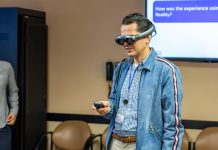The learning forecast screams cloudy, wind certain! Expectations are not crystal clear. The duties of each job are in the job description, but work changes as much as the weather. Daily duties and ongoing projects flex, and confusion spirals like an oncoming tornado. Application goes out the window when the wind and rain start. Navigating work when conditions are imperfect requires agility. But before unexpected projects strike, the learning environment and the learner can be reinforced. A positive approach to providing this support is through the development of competencies.
The same way we weatherize windows, doors, and faucets, an organization can reinforce our most precious and important assets—its people! Employees should be supported and encouraged to think and act independently and confidently before a storm arrives. A new employee knows the work needs doing but what is the work? Does your organization have a clear way to set expectations? What about when the work changes? Visibility is impaired.
A seasoned employee requires continued development and opportunity to use talents to thrive. Even in the midst of the COVID-19 pandemic, employees have a choice and it is not expected that employees will stay at a job their entire career. How can talents be used the best possible way? How can work be aligned with the interests and strengths of the individual to make the team its best? How can you design order to manage the weather and the work? Defining competencies for each position in your work environment can provide this clarity.
Competencies lead with necessary knowledge, skills, and abilities so that job tasks and projects can develop with organizational unity. Reflecting on your organizational needs can part the clouds so sun shines even when you cannot control the tempests of the weather. Clear competencies improve the efficiency and performance of a job by allowing an individual to align his or her strengths and identify opportunities. A business case can be clearly aligned with training and development gaps. Competencies can be introduced in onboarding new employees and in developing existing employees. There is room for tailoring to the individual and to the group’s needs.
Competency model development will streamline your organizational needs. It will enable each person in his or her role to know what to do in order to perform his or her part of business strategy. Let’s get started! Here is a simple way to begin.
Competency Model Development:
1. Conduct a Rapid Job Task Analysis Workshop
2. Identify Task Examples
3. Perform a Task Proficiency Analysis
#1: Conduct a Rapid Job Task Analysis Workshop
Schedule the workshops. Schedule one workshop for capturing tasks for one position. If there 10 positions in your group, you will schedule 10 meetings. For each meeting, employ the help of a facilitator, recorder, approximately five high performers, and one manager. The Learning professional likely will fill the role of the facilitator. Invite the high performers to list the tasks they perform. The recorder documents these. If you cannot come up with examples that can be described as various proficiency levels, that is not a task to document.
Give time for the group to explain what a beginner, intermediate, and advanced level of that task would look like. Each job should be narrowed to around 20 tasks. As these meetings develop, keep in mind that the tasks that will be refined into competencies do not define everything. They focus on what is valuable to move business strategy forward.
#2: Identify Task Examples
After the meeting, polish the recorded tasks up make sure the beginner, intermediate, and advanced qualifiers make sense and send them to the participants to get their feedback and support. Make any adjustments.
#3: Perform a Task Proficiency Analysis
Examine one task at a time and determine what behavior would represent beginner, intermediate, and advanced competency for each task. Walk through a task and rate it to make sure it works.
Now you have competencies defined. The sun shines again! Your organization gets the freedom to apply them best suited for the current work and needs you have. Competencies can be used throughout the life cycle of an employee. In recruiting, the competencies can be included in the job posting. When an individual is hired, he or she can be more carefully introduced to the relevant competencies. Gaps can be identified, and plans made to address and capitalize on expertise. Competencies provide a framework for coaching and mentoring. Action plans can be made from the results at a higher level. Budgeting decisions can be managed more equitably. When tasks are known, the weather storms can be supported, and work can thrive in both the rain and the sun.
Shannon Milliman, CPLP, gives keynotes and workshops applying improv principles to learning to help organizations become more creative, agile, and human independently. She manages the learning and development program for the City of Portland, OR, Environmental Services. She is a writer, poet, and playwright and specializes in bringing art to learning strategy. She can be reached at: shannonmilliman@gmail.com, https://shannonmilliman.com/.



